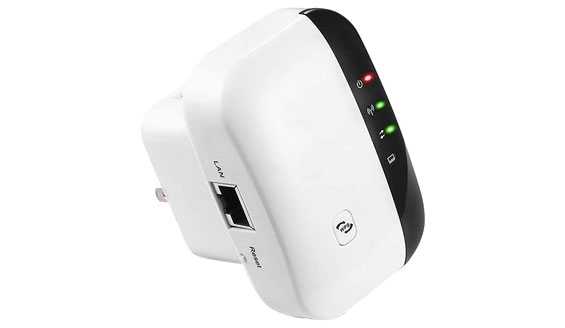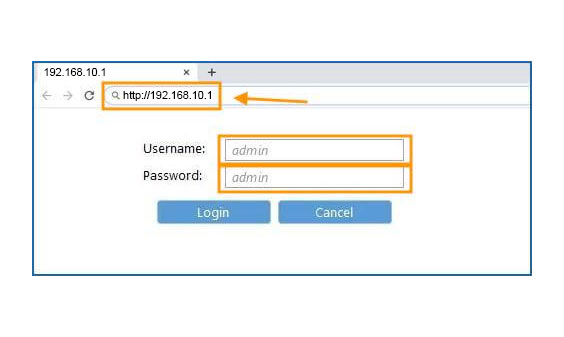192.168.10.1
Having repeaters or extenders can make your overall task of internet connectivity easy and more reliable! After installing them, you don’t need to worry about the poor internet accessibility while walking from one room to another. You will get uninterrupted Wi-Fi signals throughout your house or office or wherever you have installed the repeater. Getting access to the repeater settings will need a prominent IP Address like 192.168.10.1 or 192.168 1.10 or more. These are private IPs that you can use to get access to the account settings of your repeater without any error.
If this IP does not work for you, then that means it is not your IP. In such a case, you can use the default IP 192.168.1.10 with the default login username and password. The reason for giving you the default gateway login IP address to get access to your Wi-Fi repeater or extender is you can access the web interface to configure everything considering the internet settings and customize other settings, which includes changes in the Wi-Fi SSID, password, username, and more.
What Is The Need Of Wi-Fi Repeater?

Importance Of Location In Case Of Wi-Fi Repeaters!
Believe it or not, the coverage and performance of your range extender directly depend on the position and location of your repeater. It means if you pick the right location to place your repeater, you can expect to get more promising results in terms of internet accessibility and signal coverage.
- It is always advised to choose a centralized location for the repeater device. It will help you get at least 45% of the signals without any hassle. Other than that, you can follow some of the below-written points.
- Make sure that you don’t cover the range extenders in any way. Never keep it inside a box, drawer, or cupboard. This will weaken the signal strength.
- Try to place the device in an open area where you don’t face unwanted obstacles between the repeater and the access point.
It is a fact that Wi-Fi extenders have limited power to broadcast Wi-Fi signals. So, if you place the repeater right, you can double the performance and coverage of the Wi-Fi signals. Every building structure is different so before investing in a new extender, make sure to check out the features of different makes and models.
What Are The Default Username And Password 192.168.10.1?
By using the default username and password, you can easily get access to your repeater’s settings. It can be used when you are logging in for the very first time. It is seen that the IP address 192.168.10.1 is being used by many leading brands, and they can easily make changes in the same.
You will find all the details of the default username and the password in the manual that comes along with the repeater. The username and password for Default gateway Login IP is admin or user and admin or password, respectively.
The manual is also beneficial in that it will give you all the login information about your device.
Steps to Login 192.168.10.1
To make the login process smooth and convenient, you will need to use the IP Address 192.168.10.1, but there is a huge procedure to follow in an organized manner. Here we are discussing the step-by-step instructions regarding the same.Using an ethernet cable or a wireless connection, establish a connection between the router and the repeater. For this, you will need to add the required Wi-Fi SSID and password.
If you want to configure the extender settings manually, change your system LAN IP address to DHCP mode. Other than that, you can use 192.168.l0.10 as a static model.

Troubleshooting Tips
There are high chances that you might face a number of login issues while trying to access the 192.168.10.l from a web browser. 192.168.1.10 is a private idea, and there is a specific procedure to get access to the repeater. Here we are discussing the troubleshooting tips that can help you manage the issues by yourself without any hassle.
- If you are unable to access IP 192.168.10.1 to the browser, then it might be that your internet is not working properly, and due to lack of that, you face issues with the login procedure. To tackle this, make sure the device you are using is supporting relevant internet accessibility.
- Sometimes, you will find that the IP address 192.1668 10.1 is not working for your repeater, or it is taking a longer time than usual. In such a case, there must be network misconfiguration and other blocking issues taking place. To manage this, you can try adding the default credentials or go with some other IP Address.
- The role of an ethernet cable is very important when you want to maintain strong connections between the router and the repeater. So, make sure the cable is fully reliable and is not damaged from anywhere.
- Another thing to keep in mind is to use the IP Address in the network series of 192.168.10.0 to get access to the repeater.
- Typing the IP address right is also essential to get access to the admin page without any interruption. Make sure you are using 192.168.10.1 or 192.168 10.1 as the IP Address so that the error message of invalidity or 404 error does not pop out.
- If, after so many attempts, you won’t get access to the login page of the repeater, it is advised to rest your system as well as the repeater.
- If you are still facing issues, then try reset the device using the hard reset process to recover default login credentials.